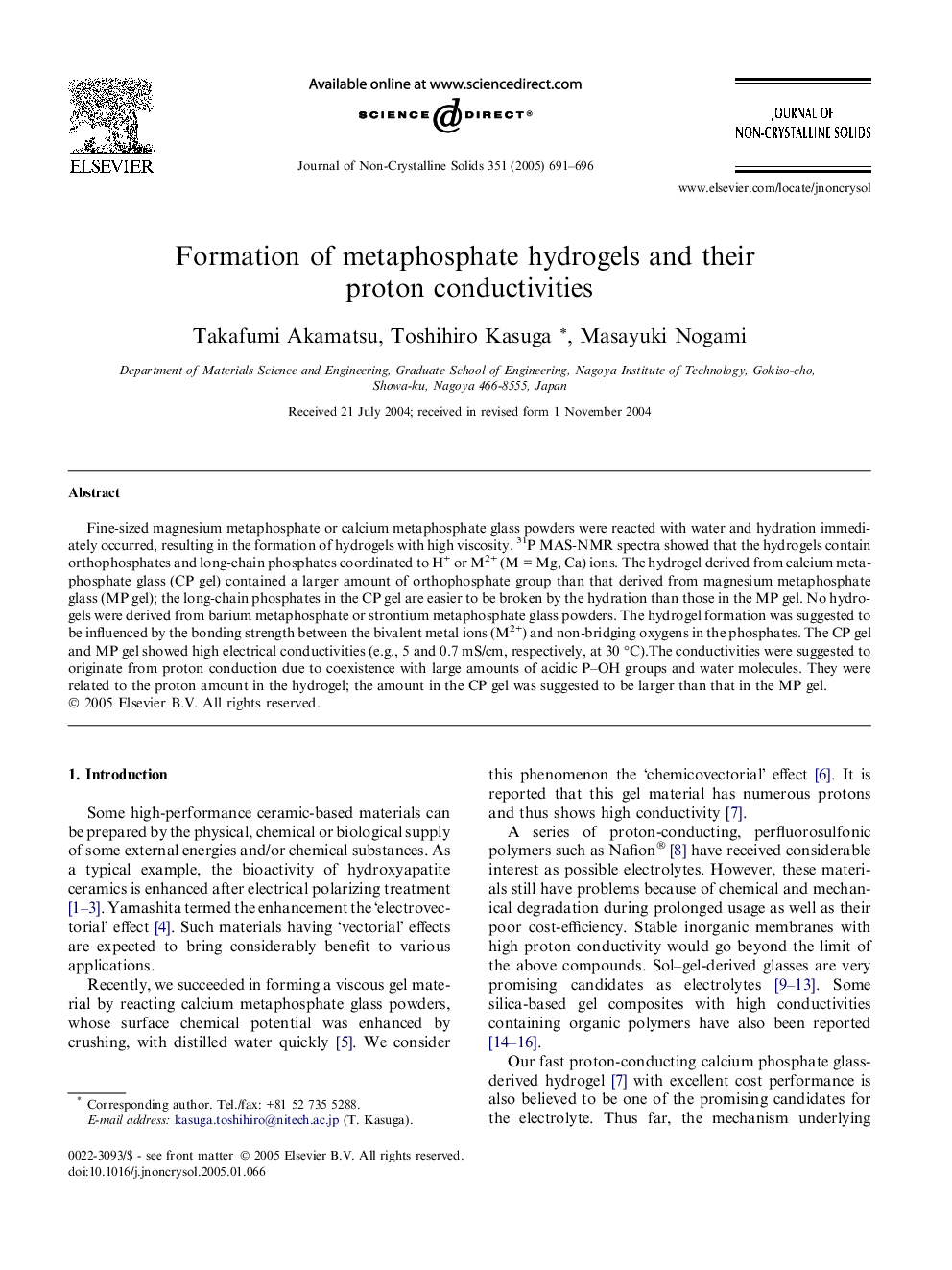| Article ID | Journal | Published Year | Pages | File Type |
|---|---|---|---|---|
| 9778189 | Journal of Non-Crystalline Solids | 2005 | 6 Pages |
Abstract
Fine-sized magnesium metaphosphate or calcium metaphosphate glass powders were reacted with water and hydration immediately occurred, resulting in the formation of hydrogels with high viscosity. 31P MAS-NMR spectra showed that the hydrogels contain orthophosphates and long-chain phosphates coordinated to H+ or M2+ (M = Mg, Ca) ions. The hydrogel derived from calcium metaphosphate glass (CP gel) contained a larger amount of orthophosphate group than that derived from magnesium metaphosphate glass (MP gel); the long-chain phosphates in the CP gel are easier to be broken by the hydration than those in the MP gel. No hydrogels were derived from barium metaphosphate or strontium metaphosphate glass powders. The hydrogel formation was suggested to be influenced by the bonding strength between the bivalent metal ions (M2+) and non-bridging oxygens in the phosphates. The CP gel and MP gel showed high electrical conductivities (e.g., 5 and 0.7 mS/cm, respectively, at 30 °C).The conductivities were suggested to originate from proton conduction due to coexistence with large amounts of acidic P-OH groups and water molecules. They were related to the proton amount in the hydrogel; the amount in the CP gel was suggested to be larger than that in the MP gel.
Related Topics
Physical Sciences and Engineering
Materials Science
Ceramics and Composites
Authors
Takafumi Akamatsu, Toshihiro Kasuga, Masayuki Nogami,
